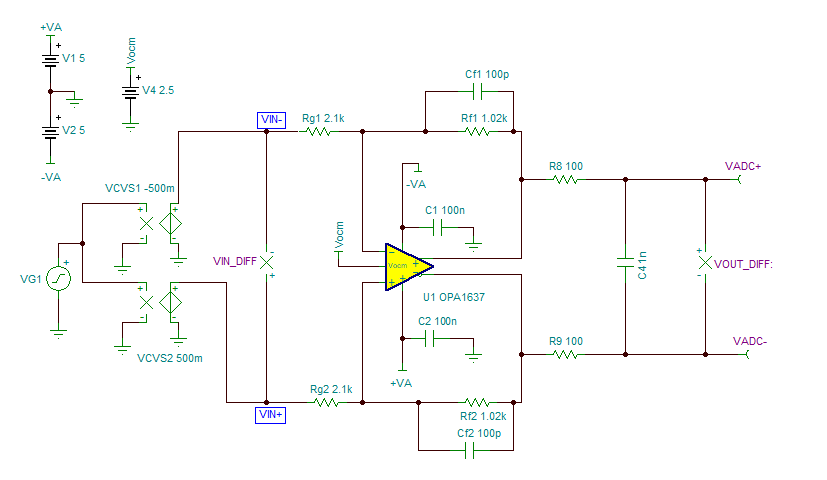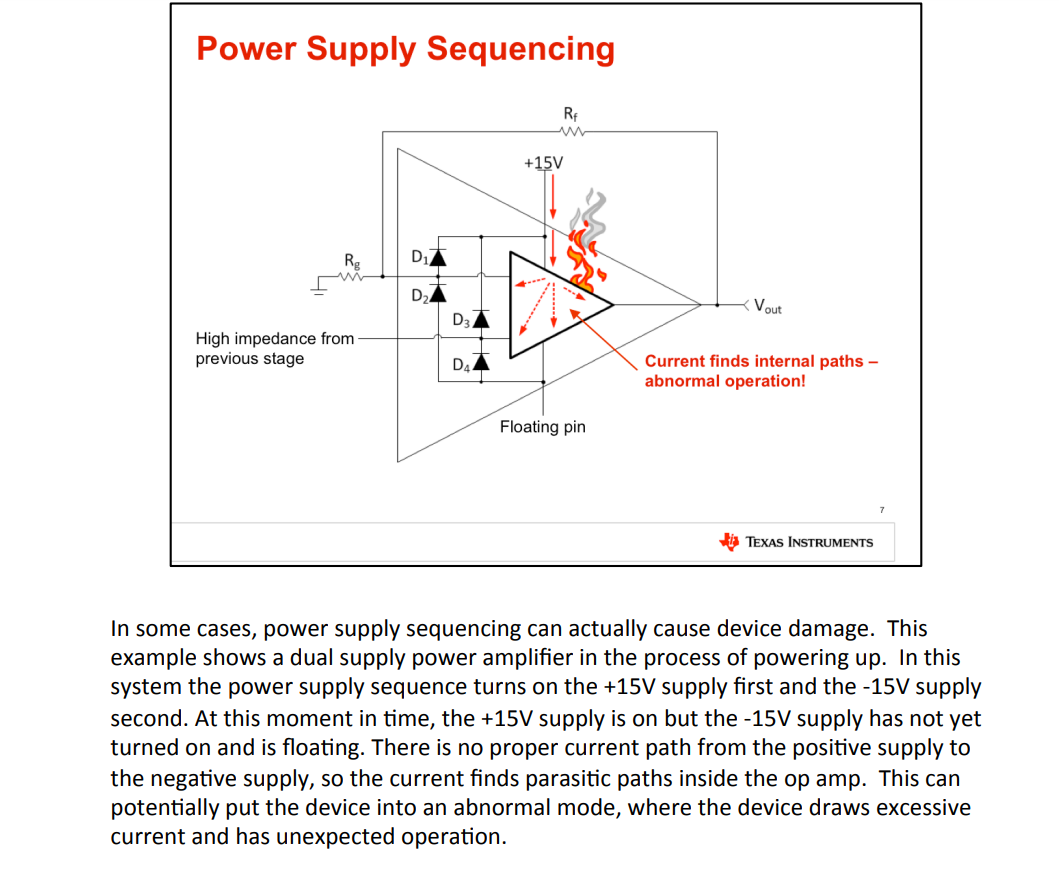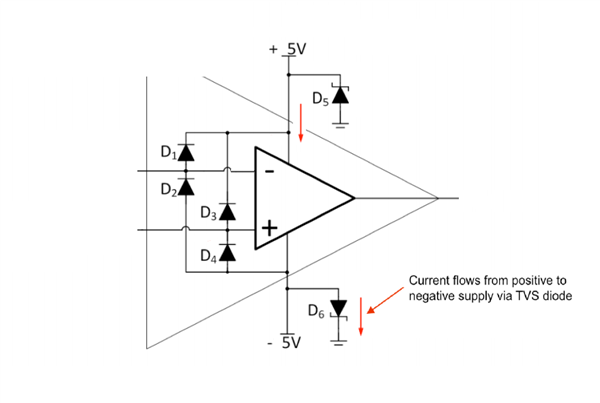Other Parts Discussed in Thread: PGA2500, , THP210, PGA2505, OPA1632
Hi, I am trying to buffer the pga2500 to an ADC with OPA1637
I want the pga2500 to be buffered with an op amp that is setup with low pass neg feedback filter > 1mhz
I am only using +/-5v rails for PGA2500 and would like to use the same power rails for the opamp.
the PGA2500 vcom connected to 0v ( GND ) for maximum SNR. ( I am NOT connecting PGA2500 VCOM to ADC 2.5v )
there are DC filter caps between the PGA2500 and OPA1637.
OPA 1637 is biased by VCOM supplied by the ADC ( buffered by OPA143 )
I am using an simple passive /2 U attenuation resistor network ringed in yellow from pga2500 8.2Vpp max swing down to less than 4Vpp for the
OPA1637 inputs. So this should be ok for +/-5v power headroom ?
I am still getting some pops and audio dropouts on high inputs.
When I hook up the AC coupled scope to the OPA1637 inputs ( either side of the R99 in the U attenuation ) I notice the phase of the audio is the same although the outputs of
the PGA2500 are inverse.
I have been recommended part THP210 instead of OPA1637 , but would like to know what causes the inverted phase at input and what causes the audio
dropouts ? the inputs OPA1637 inputs have DC filter caps so no DC from VCOM bias at PGA2500 outputs.
I think THP210 has same pins so I can try and drop in onto the prototype board but would like to know what is going wrong with OPA1637 1st !
Any ideas would be much appreciated !








